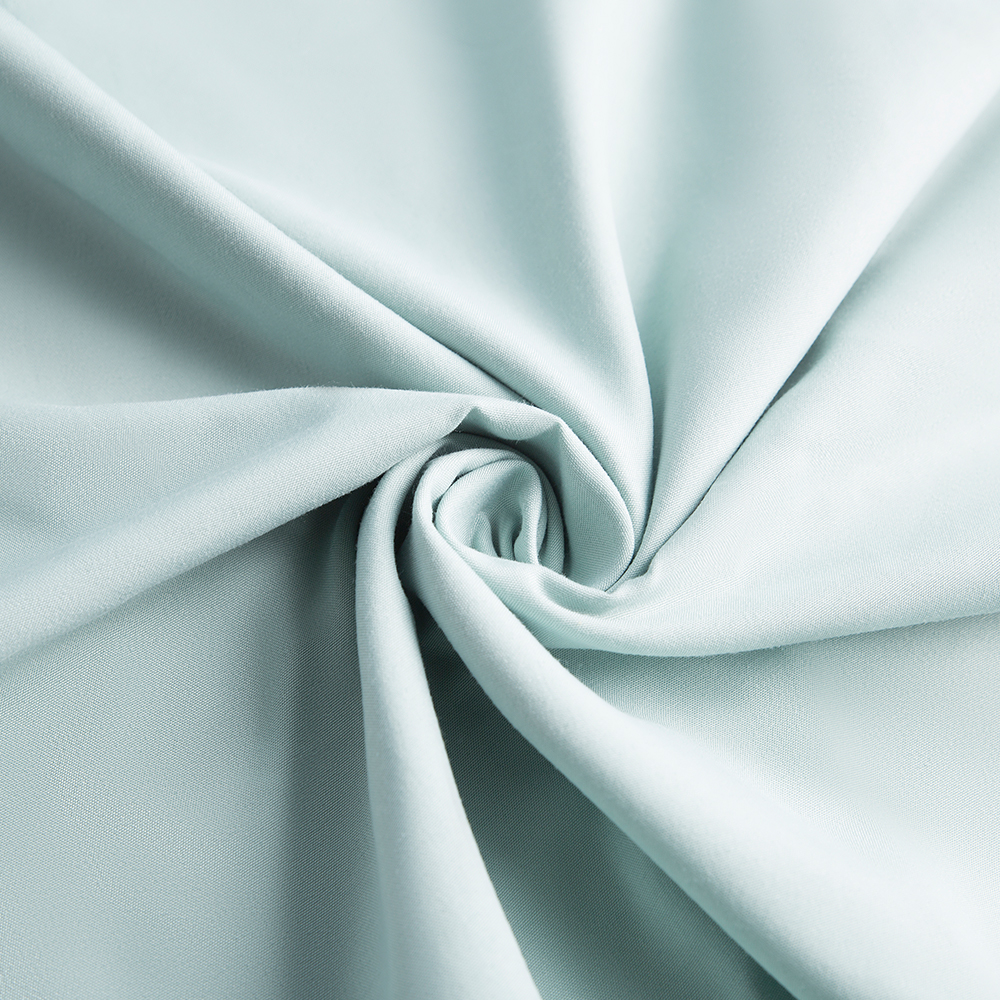In modern textile processing, sanding dyeing is an innovative process that combines sanding and dyeing techniques and is widely used in the field of improving the appearance and feel of fabrics. By sanding the fabric and combining it with a fine dyeing process, it can not only improve the surface texture of the fabric, but also create rich color effects and special touch.
In the sanding dyeing process, sanding and dyeing are interrelated. Through sanding, the surface of the fabric will become more uniform and delicate, and the dye can penetrate and adhere better, eventually forming a fabric effect that is both textured and visually impactful. This process is often used in the production of fabrics such as denim, cotton and linen, nylon, etc.
Before sanding dyeing, the fabric needs to be pre-treated, including washing and decontamination. This can remove dirt and impurities on the surface of the fabric and ensure a more uniform effect during sanding and dyeing.

Sanding is the core link of the process. Use tools such as sandpaper, grinding wheels or grinders to rub the surface of the fabric to remove part of the surface fibers, thereby forming a soft texture and unique surface texture. The intensity and time of polishing will directly affect the appearance and feel of the fabric, and the operation needs to be very delicate to avoid damaging the fabric.
The polished fabric is soaked in the dye solution, and the dye enters the fiber through adsorption and penetration to give the fabric color. During the dyeing process, the factory can choose different dyeing methods according to needs, such as dip dyeing, spray dyeing, etc., to ensure the depth and uniformity of the color.
The dyed fabric needs to be washed and fixed to ensure that the dye is more firmly combined with the fiber and is not easy to fade. After that, it can also be sorted and dried to finally obtain the ideal fabric effect.
Polishing dyeing is widely used in the production of denim, casual pants, jackets and other clothing. Through the polishing treatment, the surface of the fabric becomes softer and feels more comfortable. At the same time, dyeing can give the clothing a richer color layer and increase the visual effect. For example, polished jeans can present a classic retro feel or a unique wear effect, adding a sense of fashion.
Polishing dyeing is also widely used in home textile products, especially bedding, curtains, sofa covers, etc. Through the polishing process, the fabric can present a soft feel, while dyeing can increase the color and design sense of home fabrics, and enhance the comfort and beauty of home life.
In the field of sportswear, the polishing and dyeing process is also widely used, especially in the production of sports pants and sports jackets. Sports fabrics can improve the comfort of wearing through polishing, while dyeing gives sportswear a more dynamic and vibrant appearance.
Polishing and dyeing are not limited to the application of fabrics, but can also be widely used in fashion accessories such as leather, shoes, bags, etc. The surface of the leather after polishing is softer and smoother, and the dyeing process can give the leather richer colors and unique effects.
Polishing and dyeing can greatly improve the touch of the fabric, making it softer and more delicate. The surface fibers removed during the polishing process increase the smoothness and softness of the fabric, making it more comfortable to wear.
Through the combination of polishing and dyeing, a variety of unique visual effects can be created, such as retro wear effects, gradient colors, etc. These effects can add artistic and fashionable sense to the fabric and attract the attention of consumers.
The sanding treatment makes the surface of the fabric more uniform, and the dye can better penetrate into the fiber, ensuring that the color of the dyed fabric is more uniform and not easy to fade.
The sanding dyeing process can be applied to a variety of fabrics, including natural fibers and synthetic fibers, and is suitable for different product types, such as clothing, home textiles, accessories, etc., and has a wide market demand.





 English
English
 中文简体
中文简体






